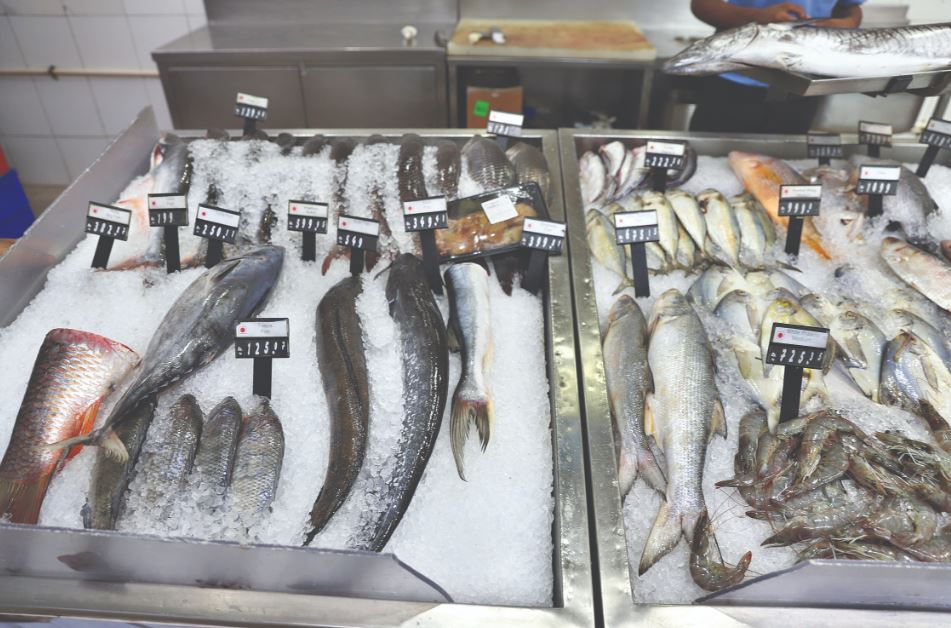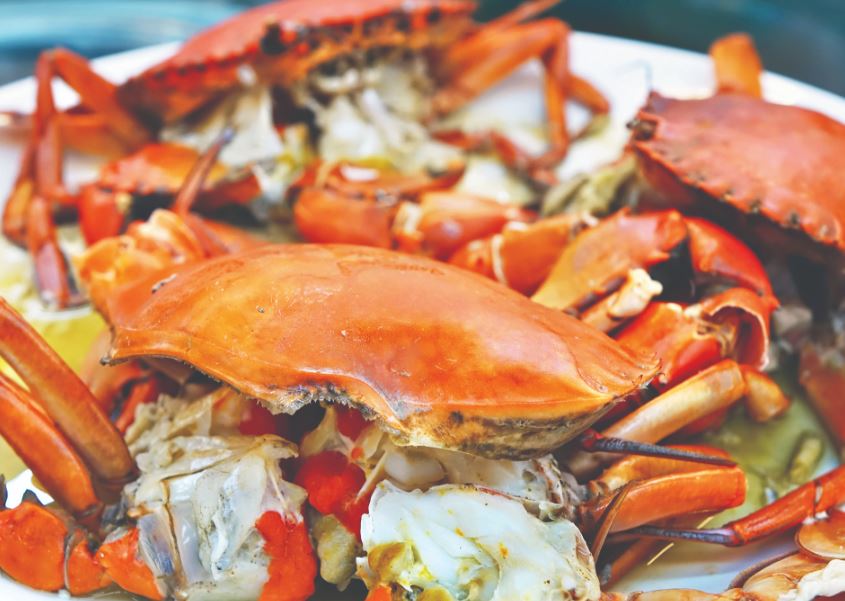Marine Food Exports
Biz@India
February 2018
Marine products sector has been a major source for generating foreign exchange as the range of products are being diversified and developmental goals are being adopted to touch an all-time high of USD 5.78 billion in exports.
The robust performance of India’s international trade over the past two decades is reflective of its integration with the global economy and its clear stance of earning foreign exchange. The country has diversified beyond exports of conventional commodities and moved into exports of frozen and processed goods.
In sync with that expansion of the economy and trade policies, India’s marine products business has emerged as a dynamic sector for generation of foreign exchange, which in turn is creating employment opportunities in related sectors, both big and small. Several factors can be attributed towards a major shift in the fisheries structure of the country that includes growing urbanisation, globalisation, rapidly changing lifestyles and food consumption habits, trade liberalisation and the emergence of new market.
The major fish production centres of India are the states of Kerala, Tamil Nadu, Karnataka, Andhra Pradesh, Goa, Gujarat, Odisha, Maharashtra, West Bengal and Lakshadweep. Indian seafood is currently being exported to more than 70 countries among them the major importers include the United States of America (US), the European Union (EU), Japan, China, Middle East amongst others.
The Marine Products Exports Development Authority (MPEDA), the regulatory body of the Government of India, states that India has emerged as one of the leading seafood suppliers in the world owing to a long coastline of 8,100kms, two million sq kms of Exclusive Economic Zone and 1.2 million hectares of brackish water bodies. According to MPEDA, there is a huge untapped potential that could rally the Indian seafood industry on the global seafood horizon with the gradual introduction of modern fishing practices, which would immensely increase the yield for the purpose of exports.
India is currently the second-largest fish producer in the world after China and accounts for nearly six pc of global fish production. Indian fisheries have been playing a vital role in Indian economy by employing close to 15 million people, contributing to the Gross Domestic Product (GDP) and are a substantial foreign exchange earning contributor. The share of marine product exports has steadily grown over the years – from INR 39.2 million (USD 600,000) in 1961-62 to INR 72.45 billion (USD 1.1 billion) in 2005-06.
Today, India’s seafood exports stand at an all-time high of USD 5.78 billion in FY17 on robust demand for frozen shrimp and frozen fish in overseas markets. The country exported 1,134,948 tonnes of marine products while the figure in the previous year was estimated at 945,892 tonnes, valued at USD 4.69 billion.
While the US and South East Asia continue to be major importers, demand from the EU has also gone up substantially. Frozen shrimp maintained its position as the top export item, accounting for 38.28 pc in quantity and 64.50 pc of the total earnings in dollar terms. Shrimp exports increased by 16.21 pc in terms of quantity and 20.33 pc in dollar terms. Frozen fish was the second largest export item, accounting for 26.15 pc in quantity and 11.64 pc in dollar earnings.
The US imported 188,617 tonnes, accounting for 29.98 pc in dollar terms. Exports to the US grew 22.72 pc, 33 pc and 29.82 pc in terms of quantity, rupee value and dollar value, respectively. South East Asia remained the second largest destination of marine products, with a share of 29.91 pc in dollar terms, followed by the EU (17.98 pc), Japan (6.83 pc), West Asia (4.78 pc), China (3.50 pc) and other countries (7.03 pc).
The EU continued to be the third largest destination for Indian marine products with a share of 16.73 pc in quantity. Frozen shrimp was the major item of exports, accounting for 40.66 pc in quantity and 55.15 pc in dollar earnings out of the total exports to the EU. Exports of Litopenaeus Vannamei shrimp to the EU improved by 9.76 pc in quantity and 11.40 pc in dollar value.
“Increased production of L. Vannamei, diversification of aquaculture species, sustained measures to ensure quality, and increase in infrastructure facilities for production of value added products were largely responsible for India’s positive growth in exports of seafood,” Nirmala Sitharaman, minister for commerce and industry states. Visakhapatnam, Kochi, Kolkata, Pipavav and Jawaharlal Nehru Port (JNP) were major ports that handled marine cargo during 2016-17.
Developmental Goals
The dietary habits of the people all over the globe are changing fast and India is gearing up to produce and supply value added products in tinned packs by adopting the latest technologies and by tapping the unexploited and under exploited fishery resources. Value addition has been considered the thrust area. Indian seafood processing units are being encouraged to go in for value addition and export through setting up new units, expanding their capacity and diversifying their current activities, etc., for value addition.
Take for instance, the Government’s Sagarmala initiative. Under Sagarmala, modernisation of existing ports, enhancement of connectivity of Indian coastal areas, port-led industrialisation and development of infrastructure for fisheries will be the key drivers for socio-economic development of coastal community.
These initiatives are expected to generate job opportunities and create about 10 million odd jobs both, directly and indirectly. The aim is also to tap the potential of the unorganised sector involved in marine production and exports and make it more organised. The programme is also modelled in saving logistic cost while enhancing modal mix for cargo movement.
In order to support the development of fishermen community, the ministry is funding select fishing harbour projects under Sagarmala in convergence with Department of Animal Husbandry Dairying & Fisheries (DADF). In this regard, INR 130 million (USD 2 million) has been sanctioned for the modernisation of the existing fishing harbour at Sassoon Dock, in Mumbai (west India). In-principle approval has also been obtained for upgrading nine fishing harbours across Maharashtra, Karnataka, Kerala, Tamil Nadu and Gujarat costing over INR 500 million (USD 7.7 million). Development of deep sea fishing vessels and fish processing centres in convergence with DADF, have also been encouraged.
Needs of the Hour
Currently export production is catered through capture and culture fisheries. It is necessary to increase the share of processed seafood vis-à-vis frozen fish export, by laying emphasis on introduction of latest technology, modernisation of processing facilities and optimising supply chain management systems. According to MPEDA, by considering the complexities involved in sustainability of seafood industry like climate changes, safety on sea, global trade regulations – a radical approach towards tapping deep sea resources without creating ecological imbalance should be encouraged. This would include ensuring the safety and security of engaged manpower.
Presently, identification and investment in new technology and focus on deep sea fishing has become vital attributes to ensure the effectiveness of supply chain/ warehousing facilities, as the seafood exports due to its high health attributes is bound to grow exponentially.
It is also suggested to introduce a quality management programme at the initial stage of catching the harvest considering the importance given to safe food production by the international community. Hazard Analysis Critical Control Point (HACCP) or EC 91/493, which offers an assurance to the buyer about the quality of the seafood products and other quality and trade barriers needs to be proactively tackled by the Indian seafood industry, to ensure a long term strong foothold in this competitive global arena. The need is to adopt a precautionary management and responsible leadership approach.
Manohar Parrikar, chief minister of Goa, believes that India should do more to make use of the fishing potential along the under-used but large Andaman and Nicobar Islands coastline, explore sustainable deep sea fishing and address issues such as seawater pollution from chemical fertiliser wash off, over-exploitation of existing fishing zones and damage to breeding grounds.











